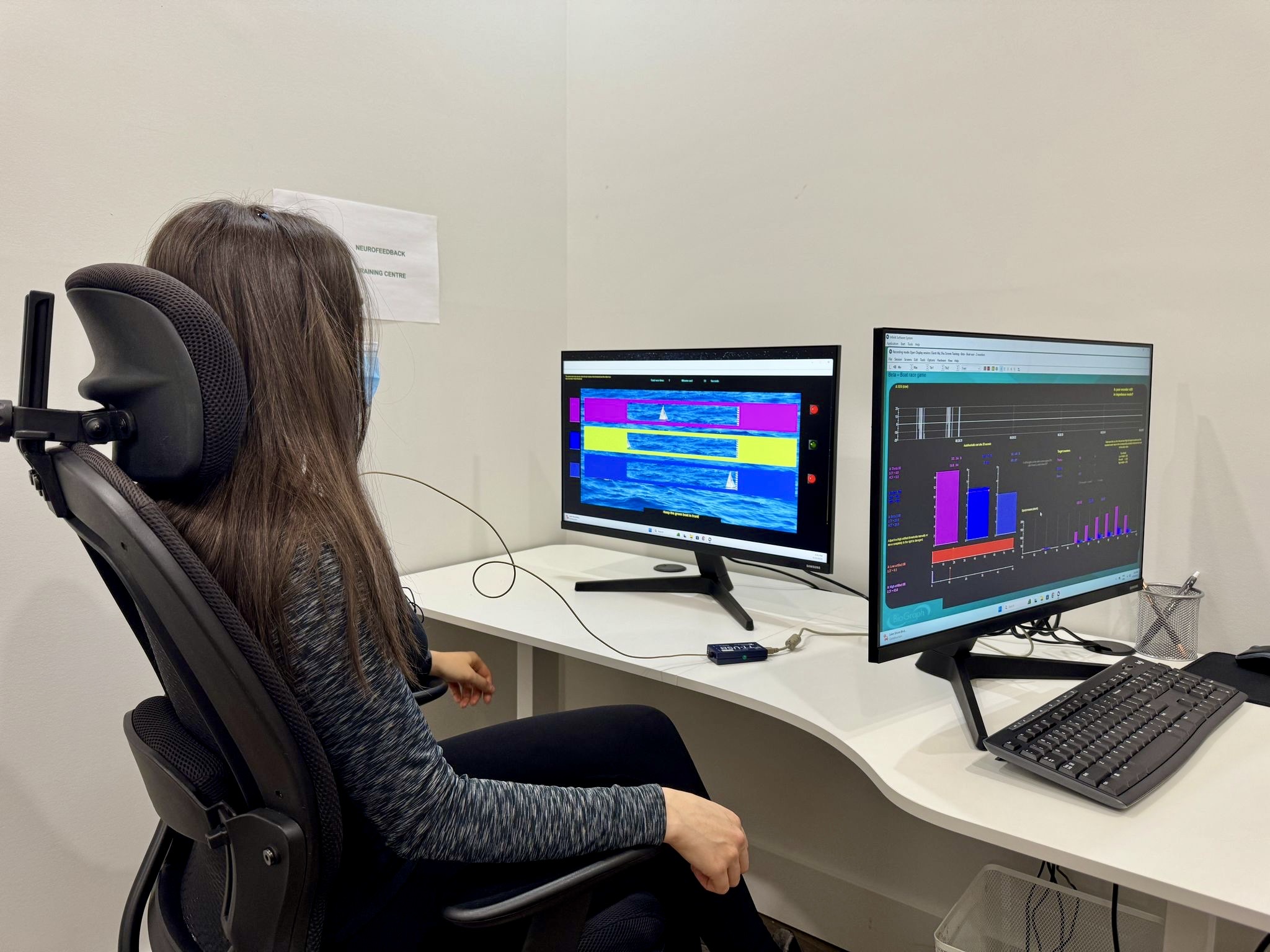Neurofeedback
Neurofeedback—also known as EEG neurotherapy or brain training—is a scientifically supported approach that helps individuals learn how to regulate their brainwave activity. By showing the brain what it is doing in real time, neurofeedback encourages it to gradually shift toward patterns associated with focus, calm, emotional stability, and improved cognitive functioning.
What Is the Process of Neurofeedback?
During a neurofeedback session, small sensors are placed on the scalp to measure electrical brainwave activity. Specialized software converts this activity into visual or auditory feedback—such as animations, sounds, or simple games.
When the brain moves into the desired pattern, the system rewards it by making the animation run smoothly or the sound become clearer. When the brain shifts away from that pattern, the feedback changes. Through repetition and reinforcement, the brain learns to maintain healthier activity on its own.
Neurofeedback is safe, engaging, and non-invasive. No electricity enters the body. The system only records brain activity.
How Are Neurofeedback Sessions Conducted?
Neurofeedback is a learning process that requires consistency to create lasting change. Many clients, particularly those with attention-related concerns, begin noticing improvement after about twenty sessions. More complex concerns may require additional training.
Sessions are typically scheduled twice a week to support steady progress.
Before starting neurofeedback therapy, a neuropsychological assessment or QEEG brain map may be recommended. This helps identify specific brainwave patterns and guides the development of a customized training plan.
During each session, sensors are placed on the scalp, and the client participates in guided neurofeedback exercises designed to promote measurable neurological change.

Who Is a Good Candidate for Neurofeedback?
Neurofeedback can be helpful for children, teens, and adults who can sit still and follow simple instructions. It is often used for attention challenges and ADHD, anxiety, low mood, emotional regulation difficulties, sleep issues, restlessness, and behavioural concerns. Many clients also seek neurofeedback as a non-medication option to improve focus, organization, and self-regulation.
Common improvements in individuals with ADHD include:
-
Better attention and focus
-
Improved task completion and organization
-
Reduced impulsivity
-
Mild improvement in hyperactivity
Neurofeedback may be less suitable for:
-
Children under six
-
Individuals with severe intellectual disabilities
-
Individuals with severe psychiatric instability
-
Clients taking certain medications that may affect training
Neurofeedback may also reduce symptoms of anxiety, depression, sleep difficulties, and emotional or behavioural challenges. Many clients benefit most when neurofeedback is combined with psychotherapy.
Request an Appointment
Please fill out the form, and our team will contact you.
Appointments are available in person and online, or you can call us at 647-726-2999.
